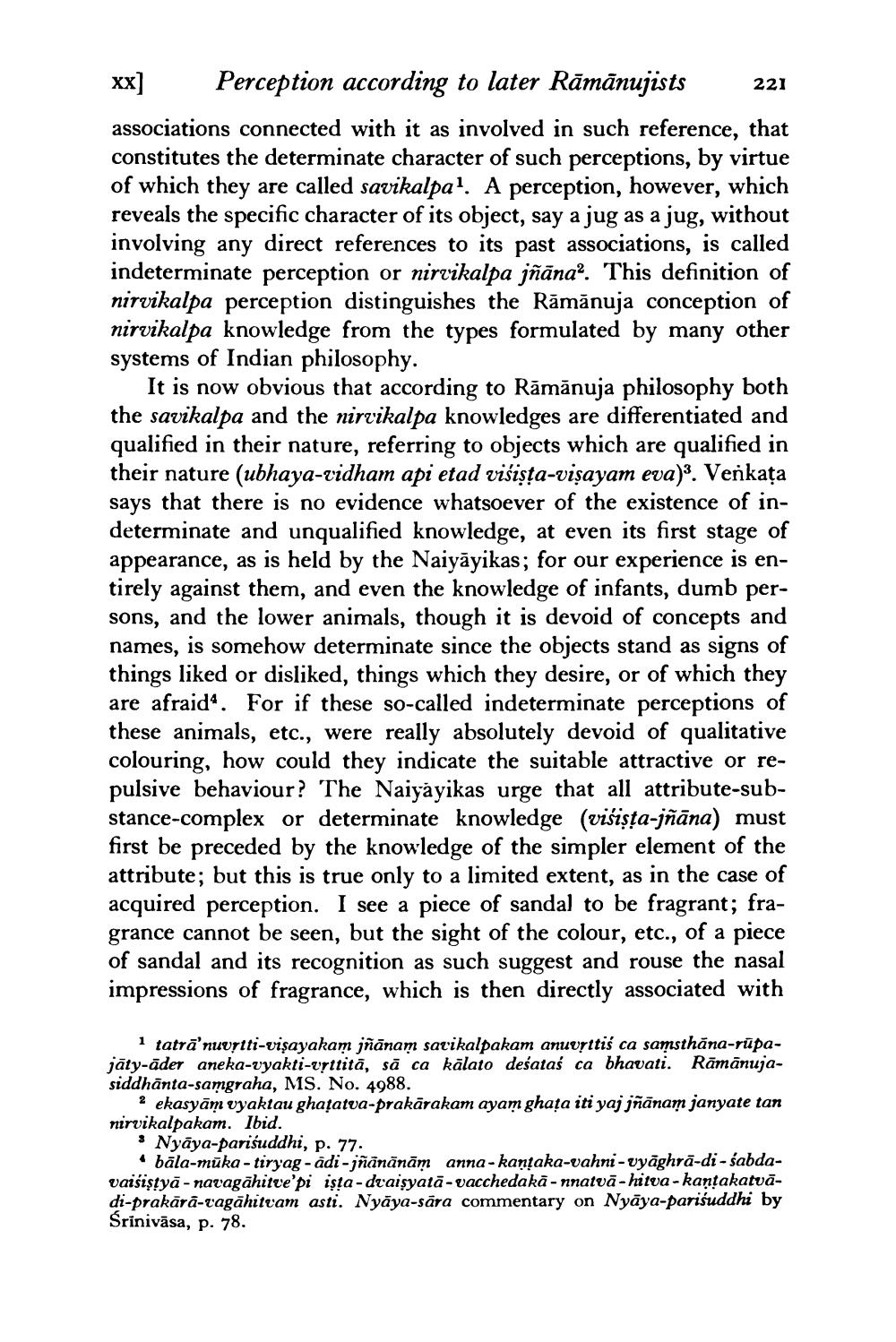________________
xx] Perception according to later Rāmānujists 221 associations connected with it as involved in such reference, that constitutes the determinate character of such perceptions, by virtue of which they are called savikalpal. A perception, however, which reveals the specific character of its object, say a jug as a jug, without involving any direct references to its past associations, is called indeterminate perception or nirvikalpa jñāna”. This definition of nirvikalpa perception distinguishes the Rāmānuja conception of nirvikalpa knowledge from the types formulated by many other systems of Indian philosophy.
It is now obvious that according to Rāmānuja philosophy both the savikalpa and the nirvikalpa knowledges are differentiated and qualified in their nature, referring to objects which are qualified in their nature (ubhaya-vidham api etad višista-visayam eva). Venkata says that there is no evidence whatsoever of the existence of indeterminate and unqualified knowledge, at even its first stage of appearance, as is held by the Naiyāyikas; for our experience is entirely against them, and even the knowledge of infants, dumb persons, and the lower animals, though it is devoid of concepts and names, is somehow determinate since the objects stand as signs of things liked or disliked, things which they desire, or of which they are afraid”. For if these so-called indeterminate perceptions of these animals, etc., were really absolutely devoid of qualitative colouring, how could they indicate the suitable attractive or repulsive behaviour? The Naiyáyikas urge that all attribute-substance-complex or determinate knowledge (višista-jñāna) must first be preceded by the knowledge of the simpler element of the attribute; but this is true only to a limited extent, as in the case of acquired perception. I see a piece of sandal to be fragrant; fragrance cannot be seen, but the sight of the colour, etc., of a piece of sandal and its recognition as such suggest and rouse the nasal impressions of fragrance, which is then directly associated with
1 tatrā'nuortti-vişayakam jñānam sarikalpakam anuorttiś ca samsthāna-rūpajāty-āder aneka-vyakti-vrttitā, sāca kālato deśataś ca bhavati. Rāmānujasiddhānta-samgraha, MS. No. 4988.
?ekasyām vyaktau ghațatva-prakārakam ayam ghata iti yaj jñānam janyate tan nirvikalpakam. Ibid.
* Nyāya-parisuddhi, p. 77.
bāla-mūka - tiryag - ādi -jñānānām anna-kantaka-vahni - vyāghrä-di - śabdavaišistyā - navagāhitve'pi ista-draisyatā - vacchedakā - nnatvā - hitva -kantakatvādi-prakārā-vagāhitram asti. Nyāya-sāra commentary on Nyāya-parisuddhi by Srinivasa, p. 78.




